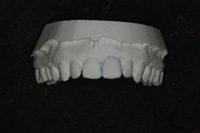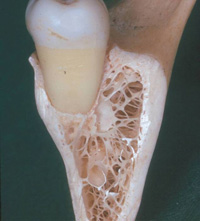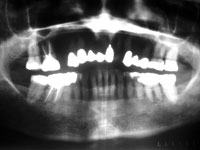Many dentists believe that production is the ultimate measurement of their practice. While dentists should always know the level at which a practice is producing on a monthly or even daily basis, additional important factors should be taken into consideration when determining the financial health of a practice. Primarily, dentists should look at practice income. Producing a high volume of dentistry is good, but if payment of fees for this production is delayed, staff members in the practice are working very hard with limited collections to show for it. Slow payment on accounts receivable has a tremendously adverse effect on the profitability of a practice.
PATIENT FINANCING AFFECTS PRACTICE FINANCE
The financial health of a practice should be monitored by tracking statistical performance trends called key performance indicators (KPIs). At Levin Group, we use KPIs to assess performance in all the important operations of a practice. It is essential for any practice to understand its financial situation and use this data to implement the steps necessary to affect the bottom line positively. We have found 4 KPIs that are particularly critical to practice success. These include collection ratio, case acceptance, accounts receivable, and production per patient. Below is a look at how these measurements can affect a practice’s financial performance.
Collection Ratio
Collection ratio measures the practice’s ability to convert production to income effectively. Levin Group recommends to all of its clients that they should collect at least 98.5% of the dentistry they perform within 30 days of service delivery. Reaching this goal is made easier through third-party financing because the practice gains immediate collections and the patient’s payments are made directly to the financing company, not the dental practice. This system allows the dental practice to be paid quickly for services performed, which increases the collection ratio.
Case Acceptance
Case acceptance, one of the most important KPIs, tracks the practice’s ability to educate and motivate patients to accept treatments that will be beneficial to their oral health. Even small increases in case acceptance percentages (especially if dealing with larger, more comprehensive cases) can mean significant additions to the bottom line. A practice’s case presentation system needs to be standardized to include flexible financial arrangements, including the use of third-party financing (eg, CareCredit) as a payment option for all treatments. An effective system should also incorporate the use of CareCredit’s pre-approval option. This prescreening for patient financing options is very important because it allows both the practice and patient to enter the case presentation with increased confidence and lower stress, knowing that third-party financing is an available option. This takes away one of the main objections a patient has to accepting needed or elective dentistry.
Accounts Receivable
Accounts receivable represents dentistry already performed for which the patient has not yet fully paid. Considering the significant costs associated with collection efforts, we strictly recommend that patients not be more than 60 days overdue on payments. Late payments beyond this point seriously hinder practice income. If a balance has gone unpaid for 90 days, there is about a 50% chance that the services performed for the patient will never be paid for. Since dentists cannot recover lost time, the time spent performing this dentistry has vanished, and no other procedure will make up for it.
Production Per Patient
Gaining a higher production-per-patient ratio not only helps the practice’s bottom line, but it also allows the practice to schedule longer, more extensive appointments that make the team more productive and slow the overall pace. Raising the production-per-patient ratio allows the dentist and team to develop and implement the systems necessary to maximize practice performance and provide all patients with exceptional care.
SUMMARY
It is important to organize systems in the practice to track and monitor KPIs such as collection ratio, case acceptance, accounts receivable, and production per patient. Analyzing these 4 KPIs makes it easier for a dentist to know exactly how efficiently a practice is running and what steps need to be taken to maximize that efficiency as well as the overall productivity of the practice.
Dr. Levin is founder and CEO of Levin Group, the largest practice management consulting firm in dentistry. Levin Group has successfully brought the business world into dentistry, training more than 7,000 dentists on how to manage their practices efficiently and profitably. The Levin Group method of practice management has helped many general and specialty practices grow an average of more than 24% in less than 12 months. Dr. Levin has published over 2,500 articles and 45 books and currently serves as the practice management editor of 6 leading dental journals as well as a columnist for the Journal of the American Dental Association. He can be reached at (410) 654-1234, rlevin@levingroup.com, or visit levingroup.com.










